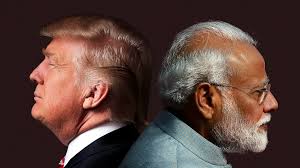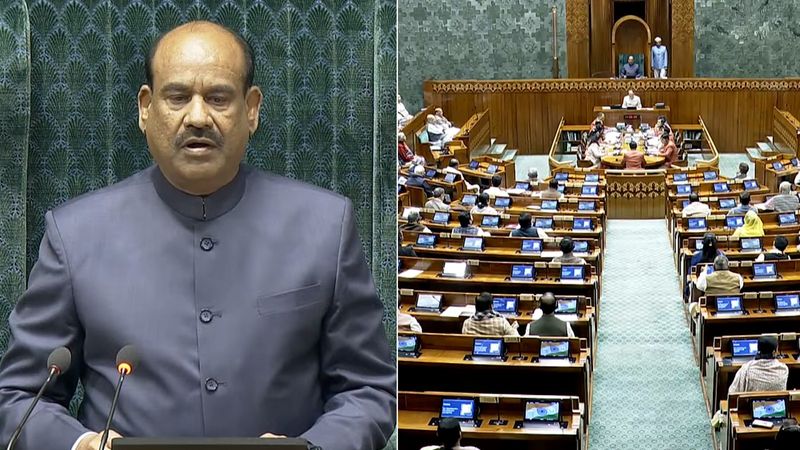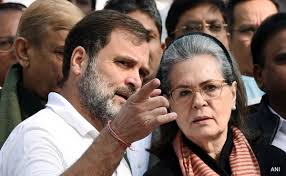Listen To This Post
Written By: Dr. AS MITTAL NewsDose.Com
Last Updaed:August 13,2025,4.30PM
In a striking and aggressive manoeuvre that embodies hardball trade tactics, US President Donald Trump has imposed an average 50% punitive tariff on Indian goods imports, effective August 27. This action has disrupted Indian export sectors, given that the US constitutes approximately 20% of total Indian exports and represents 2% of its GDP. Such drastic measures threaten the future of India-US trade relations, which had been on a strong upward trajectory until now. A sharp increase in tariffs will make Indian exports significantly more expensive and drastically reduce their competitiveness in the American market.
The United States stands as India’s largest trading partner, with total goods exports reaching $86.51 billion. Remarkably, around 44% of these exports stem from pharmaceuticals ($10.5 billion), electronics, including smartphones and semiconductors ($14.6 billion), engineering goods and auto components ($9.3 billion), and petroleum exports ($4.09 billion), all of which are currently exempt from these punitive tariffs. It’s important to note that a 25% base tariff on Indian imports was already in place, having previously ranged from 0% to 10%. This exemption provides a crucial lifeline to these sectors, which collectively account for a significant portion of $38.49 billion in merchandise destined for the U.S. While this exclusion offers some relief, it cannot mask the larger threat looming over other sectors.
In stark contrast, sectors such as agriculture and food processing, textiles and apparel, diamonds, gems, and gold jewellery, machinery and mechanical appliances, leather and footwear, and chemicals and dyes face severe additional tariffs. Consequently, approximately $48.02 billion remains vulnerable to an average 50% duty. Various analysts predict that even a conservative 20% reduction in exports could slash India’s GDP growth by one percentage point. India must take immediate action to diversify its export markets and mitigate these risks effectively.
Key Sectors Affected by the Penal Tariff
Agriculture & Food Processing: India currently exports $7 billion worth of agricultural produce to the U.S., with major items including shrimp, basmati and non-basmati rice, wheat, vegetable extracts, spices, and buffalo meat. These products together account for 60% of India’s agricultural trade with the U.S. Seafood, particularly shrimp, represents nearly 40% of India’s seafood exports to the U.S., valued at $2 billion annually. A proposed tariff of 50% has been suggested, a significant increase from the previous 7%. Spices worth $711 million and psyllium (isabgol) valued at $335 million are now facing this new 50% levy. Additionally, processed foods, sugar, cocoa, and dairy products (including ghee and milk powder) are at risk due to steep tariff differentials—often exceeding 25% to 38%—which threaten the viability of these exports.
Textiles and Apparel: India exports $8.4 billion worth of textiles and garments annually to the U.S. These are highly price-sensitive commodities, and steep duties of 59% on textiles, 63.9% on knitted clothes, 60.3% on woven garments, and 52.9% on carpets could render these exports non-viable, making them significantly more expensive than similar products from competitors like Vietnam, Bangladesh, and Mexico. Bangladesh, which benefits from duty-free access under the Generalised System of Preferences (GSP) program, stands to gain the most from India’s potential loss.
Diamonds, Gems, and Gold Jewelry: With $10 billion worth of exports to the U.S. for exceptionally cut and polished diamonds and gold jewelry, this sector will be significantly impacted by a 52.1% tariff. Even a 10% decline in export volume could cost India $1.5 billion. Countries like Belgium, Thailand, and Israel could quickly take advantage of this situation if Indian goods become unaffordable due to tariffs.
Machinery and Mechanical Appliances: The engineering sector, often regarded as India’s next primary growth driver, is also vulnerable. This category includes pumps, compressors, industrial fans, and other electromechanical components worth $6.7 billion in exports. A 51.3% tariff could drastically undermine India’s competitive pricing in the U.S. market, which Germany, South Korea, and Japan already dominate.
Leather and Footwear: With over $2 billion in annual exports to the U.S., these sectors are highly susceptible to tariff increases. Countries such as Vietnam and Indonesia, which are already major players, would likely capitalise on any struggles faced by Indian exporters.
Chemicals and Dyes: This sector, valued at approximately $4.5 to $5 billion, is at risk, particularly given China’s dominance and scale in industrial chemicals.
Competitors Ready to Pounce: Trump’s tariff actions are not occurring in isolation. Countries with preferential access to the U.S., such as Vietnam, Indonesia, Malaysia, the Philippines, Taiwan, Thailand, and Bangladesh (which have tariffs of 15-20%), could benefit as Indian exporters lose their competitiveness. Vietnam, in particular, has capitalised on its free trade agreements and low labour costs to become a favoured supplier for U.S. importers, especially in garments, electronics, and footwear. Mexico also stands to benefit significantly due to its proximity to the United States-Mexico-Canada Agreement (USMCA).
Despite trade tensions, China may still undercut Indian suppliers because of its vast scale and resilient supply ecosystem. India’s vulnerability is heightened by the absence of a comprehensive free trade agreement (FTA) with the U.S., leaving it exposed to unilateral tariff actions without any mechanisms for dispute resolution.
Way Forward
Historically, every crisis has catalysed transformative reforms in India. The food crisis of the 1960s sparked the Green Revolution, and now the recent steep tariff hike by the US demands urgent action. India must seize this opportunity to aggressively diversify its export destinations, strategically targeting emerging markets in Africa, Latin America, and the Middle East while decisively reducing its dependence on any single market.
The impending ratification of the India-UK Free Trade Agreement presents a critical opportunity for boosting exports in high-end textiles, machinery, and professional services. We must fast-track negotiations for Free Trade Agreements with Canada, the EU, and Australia to capitalise on these opportunities without delay. Moreover, India must focus inward to fortify its domestic competitiveness. A robust strategy is essential—prioritising logistics, simplifying compliance, reforming Special Economic Zones (SEZ), and enhancing infrastructure quality will make Indian goods more resilient to external shocks.
We need bold, sector-specific export promotion strategies backed by Production Linked Incentive (PLI) schemes, dynamic branding support, temporary subsidies, and revitalised export financing. Logistical support for labour-intensive sectors such as textiles and gems is not just advisable; it is imperative. Implementing these measures will effectively cushion immediate disruptions and position India for sustained growth.
––The Author is Vice-Chairman of Sonalika ITL Group, Vice-Chairman (Cabinet minister rank) of the Punjab Economic Policy and Planning Board, Chairman of ASSOCHAM Northern Region Development Council. Views expressed in the above opinion piece are personal and solely those of the author. They do not necessarily reflect TheNewsdose.com’s views.















